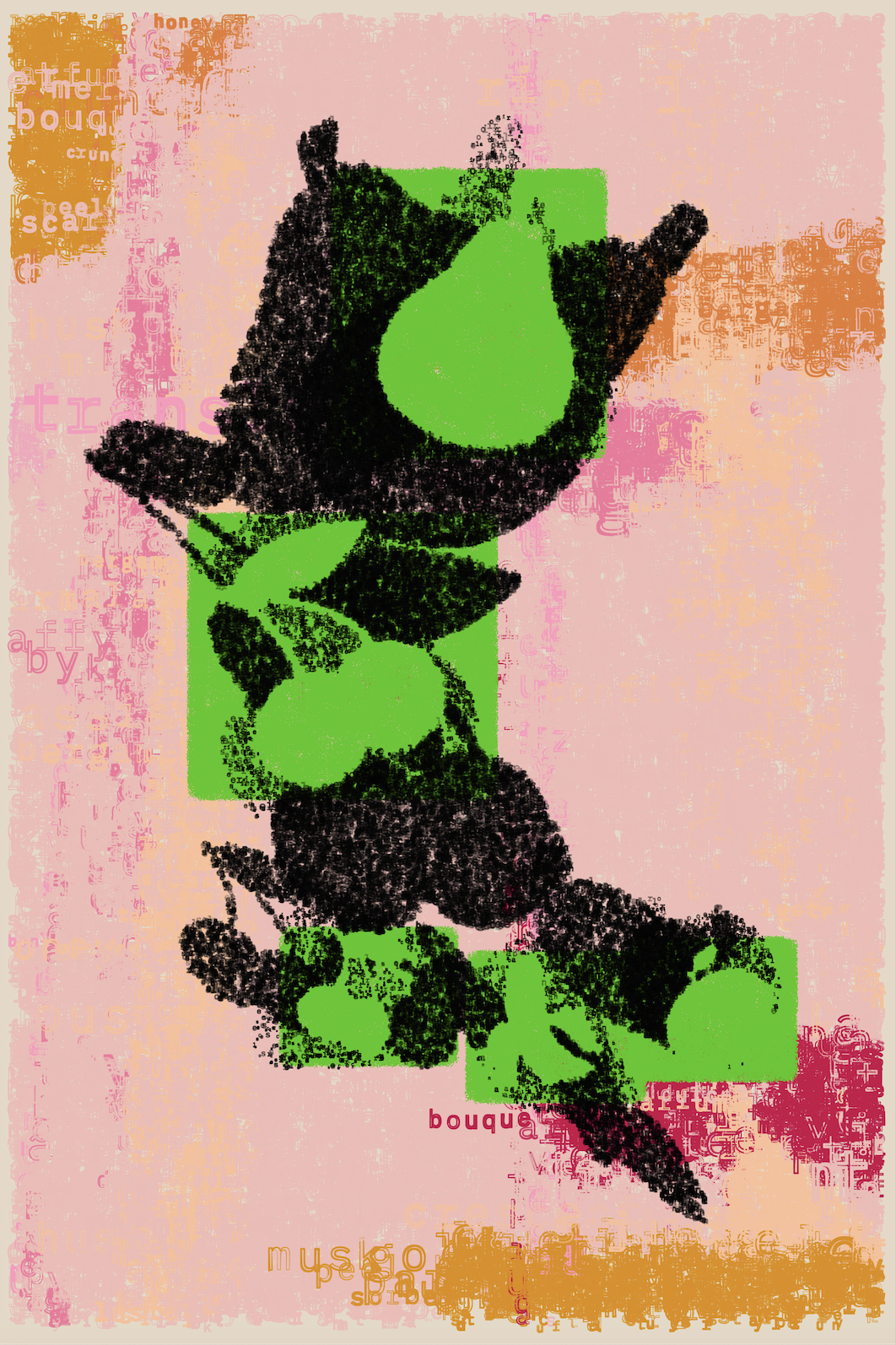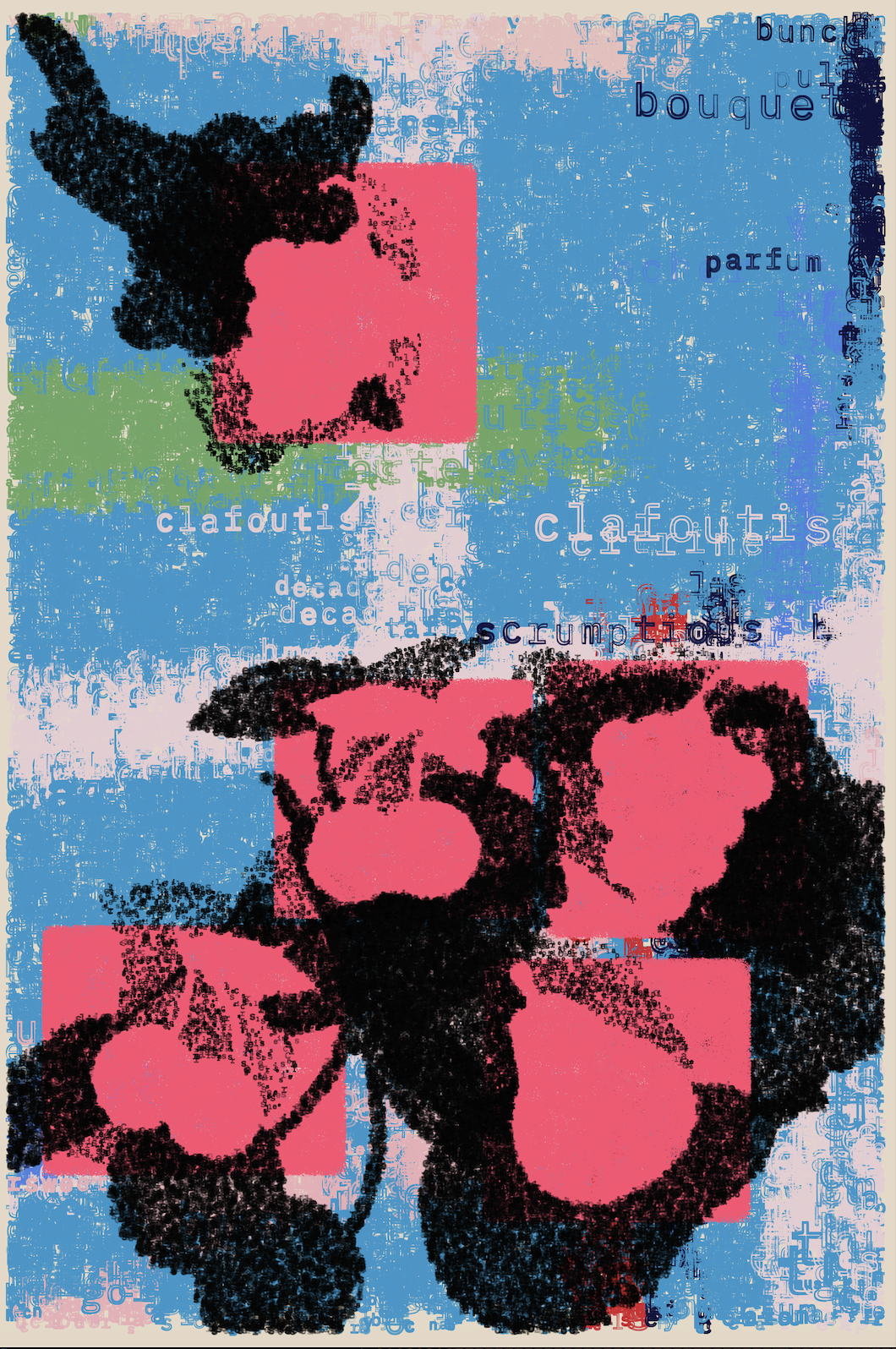SARAH RIDGLEY: FIGS
Part of a series of articles & interviews released digitally that were first published in the print edition of the Bright Moments Quarterly that was distributed at Bright Moments Paris in Paris, France in February, 2024.
Bright Moments: Hi Sarah! Thank you for joining us today for this interview. To begin, could you share a bit about your background and how you began with generative art or creative coding?
Sarah Ridgley: Sure! I don't actually have a formal art background, but I’ve always enjoyed being creative. I think the beginning of my art journey started while I was in law school. I discovered letterpress printing as a hobby, and it gave me the outlet I desperately needed to balance all the time spent reading endless pages of case law.
I was a complete novice with my press, and this ancient hunk of mechanized metal did not come with a manual. So, there was a lot of hands-on learning and problem-solving, often resorting to google and forums to figure out how things worked. I think that self-teaching and research process really laid the groundwork for my later journey into creative coding.
I continued letterpress printing for a while, mostly selling things on Etsy like greeting cards, wedding invitations, and other fun projects. It was a great experience, especially during my early motherhood years, and gave me a lot of much-needed personal time.
I came across creative coding around the end of 2017 or early 2018. At the time, I was exploring calligraphy in Procreate on my iPad. The discovery of coding was a revelation – the idea of creating lines and shapes through code was fascinating. Again, just like with letterpress printing, I had no idea what I was doing. So I used my research skills and started teaching myself to code. There were a lot of great resources out there, and Daniel Shiffman’s Coding Train was my particular favorite. His teaching style made the learning process really fun, and his videos would always cheer me up when I was dealing with something super frustrating.
As I dove into coding, it was really about exploring what I could do, imagining where I could go, and enjoying the process. This was before NFTs, and I was balancing my new interest in coding with my established letterpress shop on Etsy, Pheasant Press. To avoid mixing these two worlds, and because I wasn’t really sure where I was going with the coding, I used the pseudonym “glaem” on Instagram to share my creative coding work. I also started finding other generative artists and getting involved with the community.
You've described finding a balance between hand-drawn and machine-made work. Could you elaborate on how this exploration of the balance between handmade and machine-made elements has evolved in your work? How does this manifest in your current practice?
That's a good question. When I first stepped into creative coding, my goal was to create lines that were wobbly, natural, and organic, but in a more pleasing way than I could do holding pen to paper. This was challenging as it meant humanizing shapes that a computer naturally renders perfectly, like a circle. Creating an imperfect, organic circle requires a lot more code, and was a significant learning curve for me. I spent a lot of time experimenting with various algorithms to achieve the strokes I wanted. Each project I've undertaken has been a step further in refining my vision and style, constantly pushing the boundaries of my work.
My first long form project was Himinn, which I did on Art Blocks. The challenge there was to keep the code concise, as it needed to be uploaded to the blockchain, and I was worried what the costs would be if my script size was too big. To keep the code as tiny as possible, I initially removed some textural elements, as I didn’t quite know how to code them more efficiently. Those skills have improved over time, and I've managed to refine my algorithm so that I can create finer, more complex details. My particular approach is to use a lot of tiny pixels to make up my images. The smaller the better, although that can make things run really slowly. So it’s about finding a balance, or a fun rendering technique that makes the on-screen drawing an essential part of the work. I’ve also been moving away from using libraries like p5js, as I’ve discovered it’s much faster when I manipulate basic javascript myself to do exactly what I want.
Your work strikingly combines both figurative and abstract elements. Could you elaborate on how you integrate these two distinct aesthetics into your coding process?
Absolutely. I enjoy experimenting with both, but I find that figurative elements present a unique challenge in terms of coding that really interests me. Unlike traditional mediums, where you manipulate the work by hand, coding requires translating these concepts into typed commands. It's an interesting process to represent tangible, real-world objects through code.
I focus a lot on representational abstraction. I love taking something familiar and working it into a less precise form, something looser and indefinite. As I said earlier, I don’t have a mathematical background, so my approach is a bit different than finding a beautiful mathematical formula to express. I would say I have a more photographic style, maybe. I use a lot of image processing techniques in my code, which can be a technical nightmare when trying to make a project run consistently across different browsers and systems. I’ve had a lot of issues with my current project in this regard. But I always manage to find a way to do what I want. I think a lot of my creativity comes from thinking of unusual ideas to make something work.
For example, in my Ateliers project, I spent a lot of time working to get the lines to follow paths that were made from pixel sorting, instead of mathematically calculating where they should go. I finally figured it out using a simplified nearest neighbor sorting, but it probably would have been easier if I had a better foundation in math. However, I love the way my lines look and the gorgeous texture I was able to create with the approach I found.
Looking at your body of work, it seems like your art is really intertwined with deeper concepts. Where do you usually get your inspiration from, and how do these ideas shape the art you make?
I'm always scribbling down ideas and thoughts in my notepads or on my phone. I love dictating text messages to myself because it seems like a lot of my best ideas happen while I’m driving.
Sometimes a single idea can lead down a rabbit hole of questions and possibilities. Take my work on asemic writing, for example. It’s got these elements that look a lot like cursive script, and reflects thoughts I’ve had about how cursive is being removed from school curriculums these days. There's a conceptual layer to this, emphasizing the importance of preserving this form of writing. This hit home for me when my son, who learned cursive in school, could read a note from his grandmother, but his cousin wasn’t able to. I was really struck by this, and it started all sorts of contemplations about what this might mean for my children and the world they will grow up in. Of course, when I told my older son about this he said I was being dramatic, because he could just use his phone to translate anything he needed to. Which opened up even more thoughts to ponder. This blend of personal experience and investigating broader cultural shifts underlies a lot of the work I do.
Could you share more about the project you are working on for Bright Moments Paris?
Yes, I’m so excited about this project. At a first glance, I suppose you could say that the subject matter is still life, fruit, and all the tangible, fleshy sensations a ripe piece of fruit can evoke. But it goes a lot deeper than just the visual representation. I was thinking a lot about our reliance on text-based communication in today’s world. I, like many, prefer a text or an email over calls or meetings. But there's an aspect of personal communication we lose in text – the non-verbal cues. For example, you can see I'm smiling now, but that wouldn't come across in a text. So we’ve developed emojis, memes, and other symbols to try and fill this gap, but they can't capture all the nuances. So many times the message doesn’t come across as intended.
At the beginning of 2023, I made a New Year's resolution to use less emojis, and try to be more diligent with expressing my thoughts by words alone. Naturally, that resolution ended very quickly! I couldn’t let go of my emojis because they were so much easier, and so much more safe. I have a bit of an anxious personality, so I can agonize for hours over composing even just a single tweet. It’s scary to put a thought out there that might be misinterpreted, when you could just throw out a few emojis and be done.
I’m fascinated by the way that, as society leans more towards text as a primary means of communication, we’re constantly developing new methods and subtexts to convey these non-verbal cues. Emojis can have so many different meanings, depending on the community, almost like secret languages.
As I was thinking about this project, I was particularly thinking about the fruit emojis. They really don’t have a specific, universal meaning other than the object represented. And yet, within different groups and cultures, they can have many different symbolic meanings. Like, the peach emoji for example. Perhaps that one has actually risen to a level of universally accepted secondary meaning…I’m not sure.
This project also draws heavily from the history of typewriter art, a form of early mechanical art-making. I’ve been reading a lot about it lately, and I was amazed to learn that people were using typewriters to make art, calling them “typestracts”, as early as the late 1800s. I was also inspired by the fact that most of this work was made by females, as they were the biggest users of this new technology. It's fascinating how typewriter art, which uses letters and punctuation to create images, parallels the techniques used in generative art.
I couldn’t use a font file in this project, because it will be stored on-chain and the code size needs to be as minimal as possible. So, I had to create a method of hand encoding the letters into small coordinate arrays to use in my program. This was a tedious process, but I learned a lot and am so happy with how it turned out.
The artwork features letter-filled screens with painterly shapes and distorted, surrealist shadows revealing the fruit. The shadows are composed of tiny letters – the French names of each fruit, like “la pêche” or “la pomme”. As these names are woven into the artwork, they form subtle, encoded elements that give depth to these symbolic fruits. It's a blend of direct representation, subtext, and layered meanings, reflecting on how we communicate and perceive in the digital age.
This project seems to have a lot of layers, touching on topics like still life and the historical role of women in typewriter art. There’s a rich tapestry of themes at play here.
It really is a complex project. As I work, I jot down every interesting thought that comes to mind. These ideas accumulate, and it's a challenge to distill them into a single, cohesive message – but that's what I'm striving for. Another key theme I’m exploring is the materiality of pixels.
We often perceive the digital realm as ephemeral, lacking tangible connections to the physical world. However, there's a concrete reality to it. Consider the brightness and saturation of the tiny lights, the tactile, staccato sensations of typing – there’s a physicality to coding that might not be immediately apparent. It's similar to the physicality of painting, but expressed in a different medium. You might not see the brush strokes in my work, but you could type out my code and listen to the sound of the typing, feel the rhythm of the code being created.
The fruits in my project are also playing with this idea. The words in the background convey the essence of fruit through related sensations and concrete descriptions. This approach creates a sensory experience, akin to touching, smelling, or tasting the fruit. It's a metaphor for the tangible aspects of working with code and pixels.
Could you share some insights into the title you've chosen for this project?
Sure, the title I've chosen is Figs., which I just love for all the various ways it can be interpreted. While there are no figs in the project (or strawberries because I’m allergic to them!), the word itself immediately calls to mind fruit. So not literal figs, but perhaps figurative figs. The abbreviation ties into the broader theme of communication — think of text shorthand like 'LOL' or the use of emojis. It also echoes the labeling found in botanical illustrations or field guides, such as "fig. 1, fig. 2.", and of course the idea of figuration itself. The title plays with all these different thoughts, and leaves it to the viewer to decide which interpretation speaks to them.
Thank you for sharing more about this exciting project! To wrap up, as someone who has been in the generative art world for a few years, you've witnessed the changes both pre and post-NFT. How have you experienced these changes in the generative art community?
The shift to NFTs has definitely brought about a lot of change. Initially, my focus was on creating single works or experimenting with limited outputs. Now, with the advent of long-form work in the NFT space, the scope has expanded, requiring more outputs and a deeper exploration of how expressive and varied a generative piece can be.
I recall recently seeing someone questioning the need for NFTs and the blockchain, asking why generative artists don't just distribute their work on a disc or something similar. But in my mind, it’s the perfect match. A generative project that uses randomness will always need a seed, and I think it’s delightful the way the blockchain can store both a particular seed and the code itself, everything needed to create the work, in one place for anyone to see.
Also, I find the constraints inherent in using the blockchain to be vital. They challenge us to be creative within certain limits, like file size or the variety of outputs. These constraints shape our coding approach and lead to new discoveries. If I were just creating in a studio for a specific browser and system, these constraints wouldn't exist in the same way, especially in terms of rendering time and making the process interesting for viewers. I aim for the whole experience to be engaging, not just the final image.
NFTs and blockchain have carved a niche within generative art. I appreciate this medium and love the community that has formed around it. I have a group of fellow gen art moms I regularly speak to and other online communities where generative artists share, collaborate, and support each other. It's like an artists' guild, fostering a positive and encouraging environment. I love the camaraderie and how we all celebrate each unique perspective within generative art.




